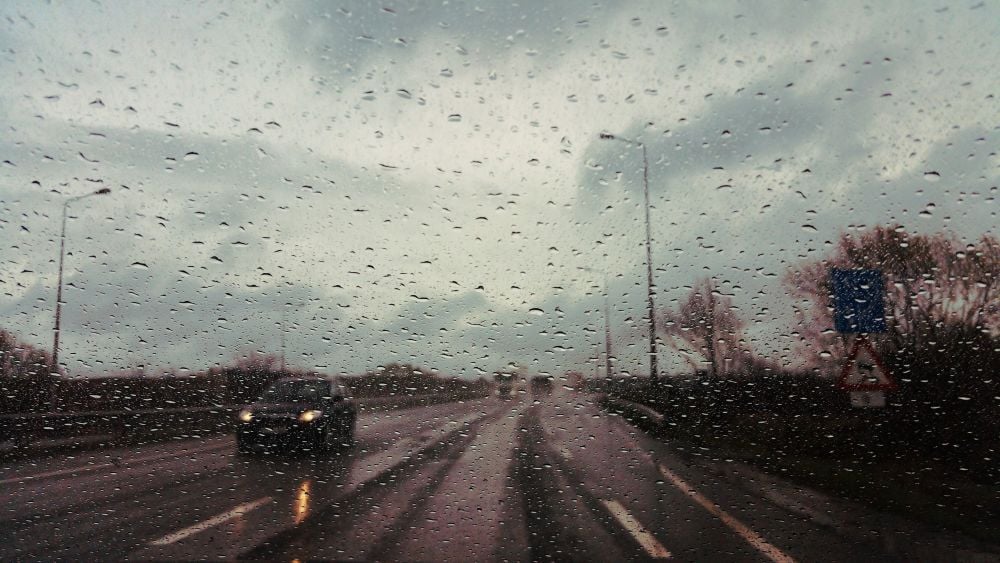Many people spend a significant amount of time traveling by car every day. From the dreaded “rush hour” traffic jam to quiet trips with the windows down, there are certainly some times that are better than others for traveling in a car. But when is the best time to schedule vacations?
The best time of day to start a road trip and travel by car is early in the morning, before rush hour. You should plan to leave around 6:00 AM if you’re only driving a short distance and even earlier for long trips. Starting in the mornings is safer due to less traffic and fewer accidents.
Throughout this article, we’ll discuss the benefits of driving in the morning versus the afternoon, as well as some of the safety concerns related to driving at different times and on certain days. We’ll also give you some considerations about leaving for a road trip at night and in various weather conditions.
Save/bookmark the two best rental car search sites:
💡 Rentalcars.com | Save money: Dollar, Thrifty, Sixt, Avis, Hertz, …
💡 Discover Cars | Save money: Hertz, Enterprise, Alamo, Avis, Budget, Six
💡 Winter Driving: Make sure to read our 7 tips for driving in whiteout conditions below in the weather conditions section, and always carry a roadside emergency kit:
- ULTIMATE ROAD SAFETY KIT: Stay protected and secure with our 98-piece premium roadside emergency car kit. This...
Also, check the best season and the tools you can use at the end of this article!
Benefits of Traveling in the Morning | Early Road Trip

Traveling in the morning is better than traveling at other times for several reasons, including less traffic, better conditions, and fewer accidents. Not to mention that leaving for a road trip early in the morning allows you to arrive at your destination sooner.
Morning Traffic/Rush Hour
Typically, there is a “rush hour” in the morning just like in the afternoon. However, data shows that the A.M. traffic jams are far less dangerous than the rush home after work. According to Avvo, which analyzed data from the Fatality Analysis Reporting System, the morning rush from 7:00 AM – 9:59 AM accounted for fewer fatal car accidents than any other time of day.
This lower risk of a dangerous crash can be attributed to fewer cars on the road during the early morning hours. According to the American Community Survey, most Americans who work outside the home arrive between 7:45 – 8:15 AM.
Assuming that most people have a commute between 15-30 minutes, that puts the most drivers headed to work on the road between 7:15-8:00 AM.
If you live in an area that’s adjacent to many school zones, you should take that into consideration, as well. School zones can significantly clog up traffic and can often be avoided by adjusting your departure time by 15-20 minutes.
This means that getting on the road earlier than 7:00 AM or after 8:00 AM will result in less traffic for most people. Less traffic is safer and leads to less stopping, fewer red lights, and smooth cruising.
Starting a road trip during the early morning hours isn’t easy for everyone. If you’re not a morning person, you should check out this Vintter Car Cup Warmer from Amazon.com for your car.
It’s specially designed for paper cups and sits right in your cup holder, which might help make your commute a little more bearable.
Tip #1: Best Car Roof Bags
We tried 7 car roof bags and found the best one from RoofPax (via Amazon.com – Affiliate Link) on a 5-day family road trip in two states last summer. We had about 40 minutes of rain, and everything in it was still dry. It’s an affordable, sturdy, waterproof, and practical way to transport a lot of things for your road trip.
Morning Conditions
Driving conditions in the morning are typically more pleasant because people on the roads are just starting their day. There are fewer impaired drivers compared to in the evening or at night.
According to traffic experts, driving conditions are safer in the morning because:
- People are in less of a hurry.
- Drivers are less distracted by texting and making calls compared to after work.
- People are typically less frustrated on their drive to work than on their drive home.
- Drivers have fewer passengers, which can also be distractions.
There may be exceptions to this logic, such as people who live in very congested or metropolitan areas. Rush hour traffic in the morning might be significantly worse in those areas compared to suburban or rural roadways.
Another benefit to morning conditions is that there are typically fewer pedestrians, bicyclists, and other non-commuters out on the roadways, which lessens the chance of having to wait at crosswalks or otherwise having to slow down or yield the right of way.
Very early in the morning, you may find that stoplights at intersections are flashing lights rather than regular stoplights. If you can take advantage of these conditions, it can make a big difference in the time it takes to get to the highway from town.
Morning conditions are better both for in-town driving and on the highway for the same reasons. Commuters make up a big bit of AM traffic, but it’s typically safer. Also, people are starting their day at different times, whereas everyone is trying to get home between 4:30 PM – 6:00 PM.
Tip #2: Best Laser Radar Detectors for You
The ESCORT IXC Laser Radar Detector (via Amazon.com) is the best one under 400 USD you can buy, and not only for your next road trip. It finds every single radar for miles! Amazon is an authorized reseller, so it’s safe to order it there.
Is It Good To Travel by Car at Night?
Traveling by car at night is not good if you don’t have to. Long road trips are far more dangerous at night than during the daytime. There is a higher risk of a deadly crash, and overall driving conditions and visibility are worse at night compared to daylight hours.
Night Travel and Car Accidents
According to the National Highway Traffic Safety Administration (NHTSA), the fatality rate for nighttime car accidents is three times higher than during the day, and nearly half of all traffic fatalities occur at night.
The NHTSA defines “nighttime” hours as between 6:00 PM and 5:59 AM.
Alcohol use is over three times higher among fatal car crashes occurring at night compared to those during the day, meaning the risk of encountering a drunk driver on the road is significantly higher after dark.
Car accidents that occur at night are also more likely to involve multiple vehicles, which is more dangerous than single-vehicle crashes.
Nighttime Driving Conditions
An explanation for the increased fatal car accidents can also be the decreased visibility when driving at night. According to the National Safety Council, not being able to see as far ahead leads to having less time to stop when you do see the road hazard.
Additionally, some people have difficulty seeing well while driving at night because of the glare from other cars’ lights, reflections, and street lamps.
Drivers with their high beams on can cause other people on the road to becoming momentarily blinded by their headlights. While the law states that drivers are to turn off their high beams when meeting an on-coming car, several drivers today don’t seem to know this and fail to turn them off, which can cause more accidents.
Many people have other vision problems that make it even harder to see at night, such as cataracts, vitamin deficiencies, or even too much sun exposure.
If you do have to start your road trip at night, you should consider some specially-tinted polarized glasses to help reduce glare. These Optix 55 Aluminum Night Driving Glasses from Amazon.com are great for helping you see more clearly at night while reducing eye strain.
Fatigue: Another reason to avoid driving at night is that you (and other drivers on the road) are more likely to be combatting fatigue.
According to the NHTSA report on Drowsy Driving and Automobile Crashes, accidents caused by sleepiness are most likely to occur after midnight and before 6:00 AM. Driving during these hours puts you more at risk of becoming drowsy and potentially doze off or lose focus on the road.
When driving at night, there’s also the risk of deer or other wildlife running into the road.
Deer are more active at and after dusk and just before dawn, times when it’s most difficult for you to see. They’re also more active during mating season, between October and January. During these months, the days are shorter, making it even more likely for you to be on the road after dark.
The Best Day of the Week to Travel and Start a Road Trip
According to the National Highway Traffic Safety Administration, most fatal accidents occur on Saturday, followed by Friday and Sunday, as an increased number of travelers are on the roads during weekends.
Tuesday is the best day of the week to travel and start a road trip. Compared to other days of the week, fewer fatal crashes occur on Tuesday. The second best day to travel is Wednesday.
Source: Accident Data
Holiday Travel
The standard rules about which days of the week are best for traveling by car may not always apply during holiday weeks. According to the American Safety Council, these are some of the worst holidays to be behind the wheel:
- Fourth of July: Due to excessive alcohol consumption and gatherings away from the home (beaches, lakes, cookouts), this is the most dangerous holiday of the year for being on the road.
- Thanksgiving: Several people trying to travel for Thanksgiving, often head out after work on Wednesday, which puts a lot of cars on the road at once trying to get to their holiday destination.
- Christmas: A lot of accidents tend to occur between the afternoon of Christmas Eve and the morning of Christmas Day. Christmas is even more dangerous when it’s on a weekend.
Weather Conditions and Driving
Bad weather can strike at any time and make driving conditions worse. But, there are some situations where the time of day can make the weather conditions even more challenging when you’re behind the wheel.
Fog
Fog is a cloud that rests on the ground, which can seriously impair your vision while driving. These conditions are more likely during the morning hours before the sun has warmed the air enough for the moisture to evaporate.
Because fog can severely limit your visibility, many drivers try to use their high beams. However, the bright headlights will only reflect off the water droplets in the air, making your visibility even worse.
Fog can also be an issue at night, which is even worse, because your visibility is already reduced by low-light conditions, and fog can increase the problems associated with glare. It will also make your headlights much less effective, making it more challenging to see while you’re driving.
Rain
According to Dr. Marc Green, a vision and reaction-time expert, rain reduces driver perception and is even more severely limiting for drivers at night. Rain makes headlights and other light sources less effective at night.
It also causes the roadway to appear darker at night and causes drivers to put most of their focus directly ahead of them. With peripheral vision already being limited after dark, and it is raining at night, the conditions become significantly more dangerous.
Water on the road can also impact how your vehicle handles. If you’re driving on the interstate or highway, other drivers can make heavy rains more dangerous by slowing down or even stopping on the roadway, causing accidents.
If you’re not comfortable driving in poor weather conditions, it’s important to take a look at the upcoming forecast when planning your trip.
Snow | 7 Driving Tips for Whiteout Conditions
- Slow down: Snowfall can make it difficult to see the road, so it is critical to reduce your speed significantly. This will give you more time to react to any potential obstacles on the road.
- Increase the following distance: To lower the risk of collisions, increase the following distance between your car and the car ahead of you. This will give you more time to react if the vehicle ahead of you stops suddenly.
- Use your headlights: Make sure to turn on your headlights when driving in a whiteout, as this will make it easier for others to see you.
- Stay in your lane: It’s important to stay in your lane when driving in whiteout conditions, as it can be difficult to tell where the boundaries are when visibility is reduced.
- Avoid sudden movements: Make sure to avoid sudden movements when driving in a whiteout, as this can be dangerous due to lower visibility.
- Be aware of road signs: Pay attention to any road signs that may be present, as they can provide helpful information.
- Pull over if necessary: If the visibility is too low to continue driving safely, pull over and wait for the weather to improve. It’s better to be safe than sorry.
💡 Prepare yourself for surprise whiteout road conditions and always carry a roadside emergency kit (via Amazon) in your car!
The Best Season to Travel by Car | For a Road Trip
Vacationers take to the roads in masses across the country, often following school calendars. That’s why the summer months are some of the busiest times for tourism all over the country, and the world.
The best season to travel by car is during the early spring or late fall months. There are typically fewer travelers on the roads during this time. Winter months may be safe depending on where you’re traveling, but there may also be a chance of poor weather conditions like ice on the roads.
Months with the highest rates of fatal crashes include May through September, so if you’re able to plan a vacation during off-peak seasons, you’ll have a much more pleasant and safer time on the road.
Traveling during off-peak months will also reduce your expenses, as gas prices often spike during the summer months. Wear and tear on your vehicle during the hottest times of the year can be even more severe if you’re traveling long distances.
You should also consider the weather trends for each season. For example, if you’ve never driven in snow, you probably shouldn’t head up north in the middle of winter. If there’s a hurricane headed for the east coast, driving to Florida probably isn’t the best idea.
Of course, if you postpone your trip until after the hurricane passes, you should be fine.
Tools for Determining the Best Time To Travel
Luckily, technology continues to provide ways to make our lives more convenient, and car travel is no exception. There are many tools available today that will help you check traffic, nearby accidents, and other considerations when you’re planning to head out on the open road.
Here are some of the tools that you can use before you get behind the wheel:
- Google maps can show you traffic on your route.
- Waze can show you live traffic and accident updates, as well as road conditions.
- MapQuest will show you traffic conditions and even has live traffic cam footage.
Using these tools along with the information you know about your area can help you determine if it’s a good time to leave or if you should wait an hour. This could be especially helpful during rush hour traffic when an accident on the roadway can set you back for hours.
Road Atlas Tips
Despite your smartphone, GPS, and Google Maps, still bring a road atlas!
Why? You never have to worry about losing a wireless connection with an atlas since you have all the information you need right at your fingertips. Furthermore, unlike a smartphone, a road atlas map never runs out of power. It’s a dependable, anti-fragile source of navigational information.
Final Thoughts
If you’re traveling by car, there are many things to consider when planning your road trip. Many people only estimate what time they should leave, not when to return. But this is an important consideration that you should plan. The best time to travel by car is in the morning when there is less traffic and less risk of an accident.
Final tip: There are some important things to know on how to stay focused after a long ride in your car.





















